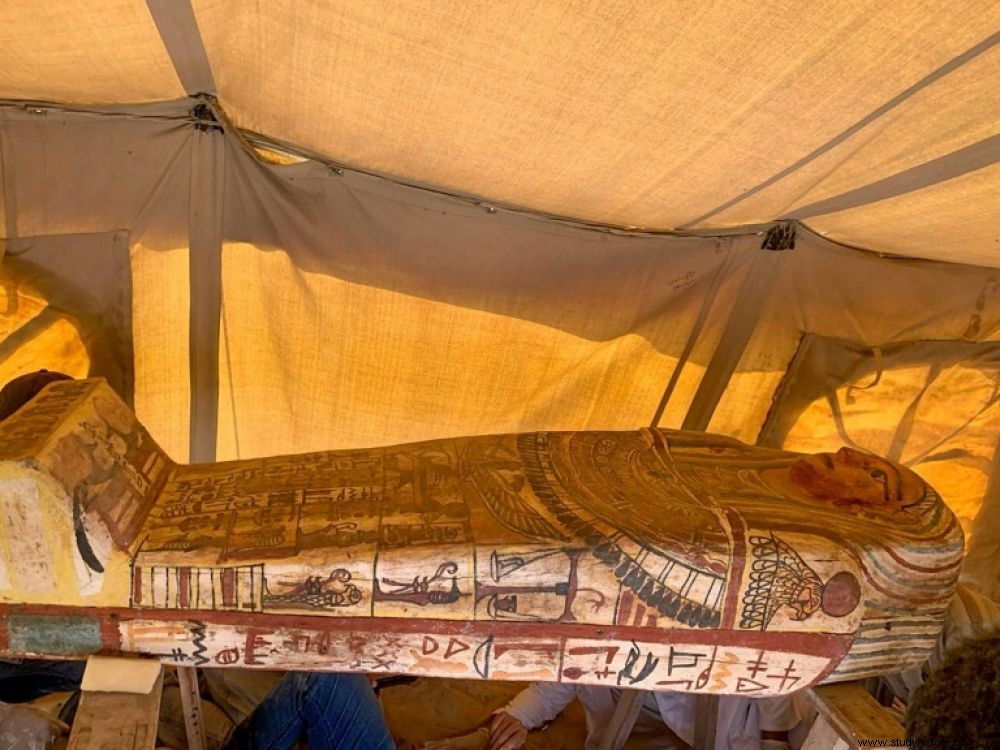Egyptian authorities announced on Sunday September 20, 2020 the discovery of 14 new sarcophagi dating back around 2,500 years. They rest at the bottom of a well in the necropolis of Saqqara southwest of Cairo.

One of fourteen 2,500-year-old coffins discovered in a burial shaft at the desert necropolis of Saqqara, south of Cairo on September 20, 2020.
This new discovery of 14 sarcophagi made at Saqqara was made on Friday, September 18, 2020. It adds to that of 13 other sarcophagi at the same location a week earlier, the Ministry of Antiquities said in a statement. The site of Saqqarah (or Saqqara), which is 25 kilometers south of the pyramids of the Giza plateau, is a vast necropolis which notably houses the famous step pyramid of Pharaoh Djoser, the first of the Pharaonic era. This monument, built around 2,700 BC by the architect Imhotep, is considered one of the oldest on the surface of the globe.
Only "a beginning"
Images of the well-preserved painted wooden sarcophagi show brown and blue patterns, as well as numerous hieroglyphic signs. According to the ministry, “other sarcophagi should be found in other nearby wells (from the place of discovery, editor's note) with new excavations planned soon" . The ministry had sent out a promotional video in early September announcing findings. It featured the Minister of Antiquities and Tourism Khaled el-Enani announcing that the discoveries made at Saqqara recently were "just the beginning" .
For several years, the Egyptian authorities have regularly announced archaeological discoveries, among other things with the aim of reviving tourism. Archaeological sites are a major argument for Egypt in the face of competition from other tourist destinations. But the share of tourism in the country's income has been undermined by political instability and the attacks that followed the 2011 revolution that ousted Hosni Mubarak from power, and more recently by the Covid-19 epidemic.
Tourism and coronavirus
This vital sector for the Egyptian economy had reached a record number of 13.6 million visitors in 2019 before the new coronavirus once again drove foreign tourists away. The pyramid of Djoser had reopened to the public in March after several years of work. But the site had been closed to visitors in mid-March, like all other archaeological sites, due to the epidemic, before reopening on September 1.
